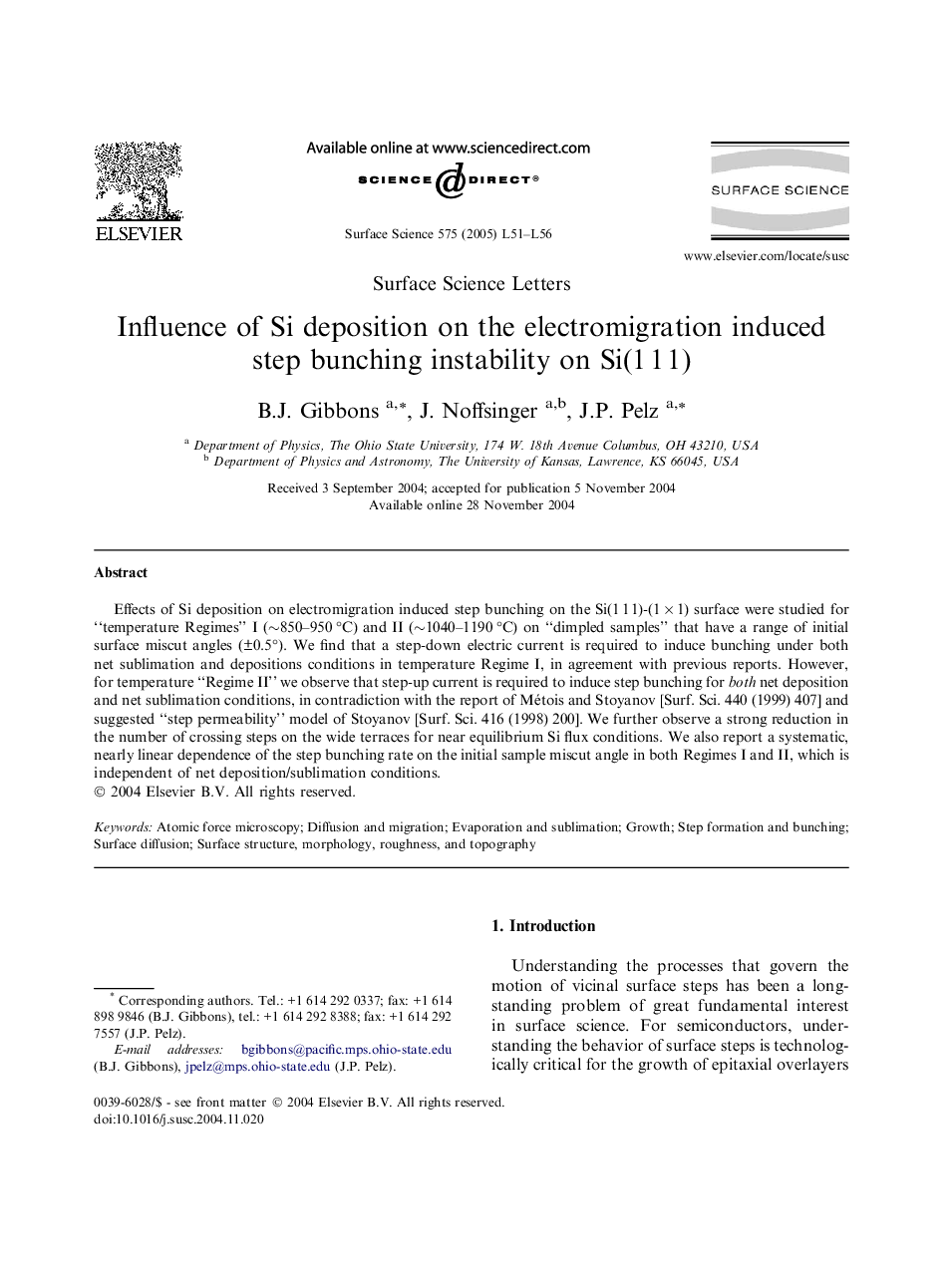| Article ID | Journal | Published Year | Pages | File Type |
|---|---|---|---|---|
| 9595794 | Surface Science | 2005 | 6 Pages |
Abstract
Effects of Si deposition on electromigration induced step bunching on the Si(1 1 1)-(1 Ã 1) surface were studied for “temperature Regimes” I (â¼850-950 °C) and II (â¼1040-1190 °C) on “dimpled samples” that have a range of initial surface miscut angles (±0.5°). We find that a step-down electric current is required to induce bunching under both net sublimation and depositions conditions in temperature Regime I, in agreement with previous reports. However, for temperature “Regime II” we observe that step-up current is required to induce step bunching for both net deposition and net sublimation conditions, in contradiction with the report of Métois and Stoyanov [Surf. Sci. 440 (1999) 407] and suggested “step permeability” model of Stoyanov [Surf. Sci. 416 (1998) 200]. We further observe a strong reduction in the number of crossing steps on the wide terraces for near equilibrium Si flux conditions. We also report a systematic, nearly linear dependence of the step bunching rate on the initial sample miscut angle in both Regimes I and II, which is independent of net deposition/sublimation conditions.
Keywords
Related Topics
Physical Sciences and Engineering
Chemistry
Physical and Theoretical Chemistry
Authors
B.J. Gibbons, J. Noffsinger, J.P. Pelz,
